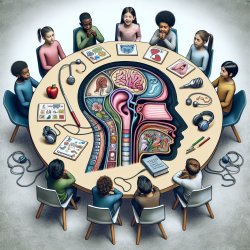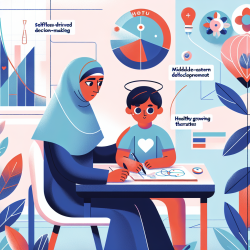Introduction
As a practitioner working with adolescents, understanding the nuances of gender development is crucial. A recent study titled "Endorsement of Masculine-Typed Behaviors Decreases During Middle Adolescence: The Contextualizing Role of Peer Experiences for Adolescents Living in the United States" sheds light on how masculine-typed behaviors evolve during adolescence. This blog will delve into the findings of this study and explore how practitioners can use these insights to improve outcomes for adolescents.
Key Findings from the Study
The study examined 334 U.S. adolescents, focusing on how masculine-typed behaviors change from ages 14 to 17. The researchers found that both boys and girls showed a decrease in these behaviors over time. Interestingly, negative peer experiences were linked to increased masculine-typed behaviors, while friend support was associated with a decrease.
Implications for Practitioners
Understanding these dynamics can be incredibly beneficial for practitioners. Here are some ways to incorporate these findings into your practice:
- Focus on Peer Relationships: Encourage adolescents to foster positive friendships. Highlight the importance of supportive peer networks in reducing the need for conforming to traditional masculine norms.
- Address Negative Peer Experiences: Work with adolescents to develop strategies for coping with negative peer interactions. This can help mitigate the increase in masculine-typed behaviors that often result from such experiences.
- Promote Emotional Expression: Encourage both boys and girls to express emotions openly. This can counteract the traditional masculine norms of emotional stoicism and toughness.
Encouraging Further Research
While this study provides valuable insights, it also opens the door for further research. Practitioners are encouraged to explore additional factors that may influence the development of masculine-typed behaviors, such as cultural and socio-economic variables.
Conclusion
By understanding the role of peer experiences in shaping masculine-typed behaviors, practitioners can better support adolescents in navigating these complex dynamics. Encouraging positive peer interactions and emotional expression can lead to healthier social and emotional development.
To read the original research paper, please follow this link: Endorsement of Masculine-Typed Behaviors Decreases During Middle Adolescence: The Contextualizing Role of Peer Experiences for Adolescents Living in the United States.










